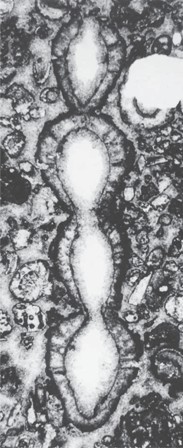Venezuelan sandstone caves: a new view on their genesis, hydrogeology and speleothems
Main Article Content
Abstract
Caves in arenites of the Roraima Group in Venezuela have been explored on the Chimantá and Roraima plateaus (tepuis). Geological and geomorphological research showed that the most feasible method of caves genesis was the winnowing and erosion of unlithified or poorly lithified arenites. The unlithified arenitic beds were isolated by well-cemented overlying and underlying rocks. There is a sharp contrast between these well-lithified rocks and the loose sands which form the poorly lithified to unlithified beds. They are only penetrated by strongly lithified pillars which were cemented by vertical finger flow of the diagenetic fluids from the overlying beds. Such finger flow is only typical for loose sands and soils where there is a sharp difference in hydraulic conductivity. The pillars exhibit no signs of further dissolution. The caves form when the flowing water accesses the poorly lithified beds through clefts/crevices. Collapse of several superimposed winnowed-horizons can create huge subterranean spaces. Futher upward propagation of the collapses can lead to large collapse zones which are commonly observed on the tepuis. Dissolution is also present but it probably plays neither a trigger role, nor a volumetrically important role in the cave-forming processes. The strongest dissolution/reprecipitation agent is condensed atmospheric moisture which is most likely the main agent contributing to growth of siliceous speleothems. As such, it can be active only after, but not before the cave is created. Siliceous speleothems are mostly microbialites except for some normal stalactites, cobweb stalactites and flowstones which are formed inorganically. They consist of two main types: 1. fine-laminated columnar stromatolite formed by silicified filamentous microbes (either heterotrophic filamentous bacteria or cyanobacteria) and 2. a porous peloidal stromatolite formed by Nostoc-type cyanobacteria. The initial stages of encrusted shrubs and mats of microbes were observed, too, but the surrounding arenitic substrate was intact. This is strong evidence for the microbial mediation of silica precipitation.
Downloads
Download data is not yet available.
Article Details
Issue
Section
Original Scientific Papers
Authors have copyright and publishing rights on all published manuscripts.

